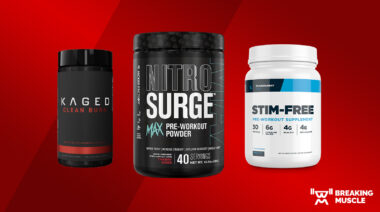A recent study in Spain found that adolescents’ blood levels of various micronutrients are correlated with how well they performed in physical fitness tests. This study provided new insight between different measures of adolescent health, in particular the direct impact of nutrition upon athletic performance.
Researcher Luis Gracia-Marco of the University of Zaragoza, Spain and his colleagues used data from a large, long-term research project known as the Healthy Lifestyle in Europe by Nutrition in Adolescents Cross-Sectional Study (HELENA-CSS). A portion of the study gathered nutrition and physical fitness data from thousands of volunteers between the ages of 12.5 and 17.5 in cities all across Europe. Blood samples taken from a third (1,089) of the volunteers were analyzed for micronutrients such as: hemoglobin (indicator of iron intake), soluble transferrin receptor, serum ferritin, retinol, vitamin C, beta-carotene, alpha-tocopherol, vitamin B6, cobalamin, holo-transcobalamin, plasma folate, RCB folate, and vitamin D.1
The subjects were also required to perform a physical fitness test, which included a standing long jump test (to assess lower body strength), and a 20-meter shuttle run test (to assess cardiovascular fitness via VO2max). Various factors such as age, time of year, latitude of home city, body mass index, age of the start of menstration females, and amount of physical activity were taken into account when looking for correlations between micronutrient levels and physical fitness.2
The results of the study revealed that those who had blood levels of certain micronutrients were directly connected with their performance on the physical fitness tests. Concentrations of hemoglobin, retinol, and vitamin C in males, and beta-carotene and vitamin D in females were associated with VO2max for cardiorespiratory fitness. Concentrations of hemoglobin, beta-carotene, retinol, and alpha tocopherol in males, and beta-carotene and vitamin D in females was connected with performing better on the standing long jump test, which was used for muscular fitness.3
Studies such as this one that connects micronutrients with physical fitness have been limited as well as controversial. This new study is one of the first to find connections between micronutrients and physical fitness in adolescents. However, it could be concluded that adolescents are not the only one to display this connection. Adults, and especially adult athletes more than likely have a connection as well. This study has opened the door for more research to be conducted in order to reveal more about the relatinships between micronutrients and physical fitness.
“The associations between physical fitness and iron or vitamin status observed in this cross-sectional study in adolescents should be followed up by a study specifically designed to evaluate causal relationships,” the authors write.4
Photo courtesy of Shutterstock.






